It is about no. 5 rock finds found in different points of the Fumane Cave, in the Aurignacian levels, with dimensions between 10 and 30 centimeters, with red ocher representations, some representing schematic motifs, other naturalistic motifs including animals, plants and a very particular anthropomorphic figure. The rocks are all fractured in places that interrupt the figures and were all found upside down at the base of the archaeological level; these tests made it possible to ascertain that the fragments certainly detached due to the cryoclastic effect during the Aurignacian occupation of the site from the vaults or walls of the cavity which were therefore decorated. Inside the cave, the use of ocher is attested in several places, with the discovery of about 50 blocks of red and yellow ocher, as well as two areas whose surface was entirely covered by it, one in the internal part and the other in the entrance, corresponding to a dating of about 41.000 years ago; subsequent investigations made it possible to ascertain that the ocher was recovered from the quarries located at a distance between 5 and 20 kilometers from the cave. It is very probable that the age of the rock decorations is contemporary with the ocher deposits found, so that Fumane's paintings can be considered the most ancient form of European wall art.
A first fragment was found under the entrance arch to the cave; it has maximum dimensions of about 30x10x7 cm. and represents the outline of a four-legged animal with a long neck and a slender body, probably a mustelid or a felid, with some parts missing due to the detachment of a clast (the tail and the fourth leg, the rear).
The second fragment, the best known, was found near the entrance to a gallery of the cave, near the back wall on the left; of the maximum dimensions of 24x11x8 cm., represents a human figure with a linear development body, horizontal arms and spread legs, two large horns on the triangular head (identified with a mask) and at the navel two small lateral prominences stand out ; something hangs from the right arm, perhaps a four-legged animal or a ritual object. The image has been interpreted as a shamanic figure, similar to other figures found at Aurignacian sites, such as the ivory lion-man statuette from Hohlenstein-Stadel and the horned shamanic figures painted in the Grotto des Trois-Freres in France and in Grotta del Genovese in Levanzo in Sicily.
The third fragment was found near the second, with maximum dimensions of 20x17x12 cm. it could represent an animal body but the type cannot be interpreted due to the incompleteness of the find.
The fourth find is the largest, found near the entrance to a gallery of the cave, the one furthest to the left, with the maximum dimensions of 35x20x8 cm., represents a circular motif from which three sections branch off on one side and a large section , almost oval, on the opposite side; it is difficult to interpret, perhaps a human figure. The fifth find was found near the fourth, measuring 14x7x5 cm. it could represent an animal body but the type cannot be interpreted due to the incompleteness of the find.
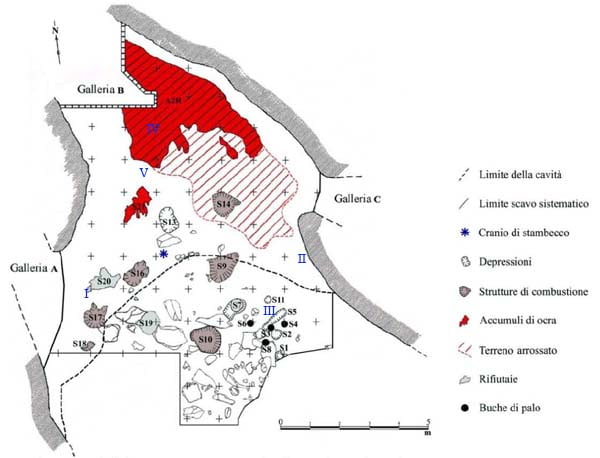
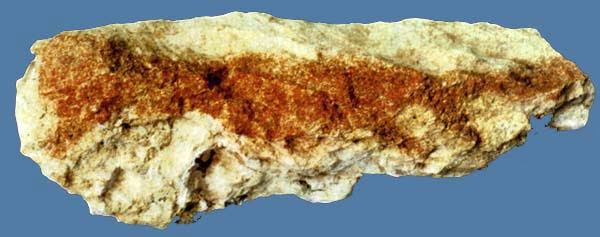
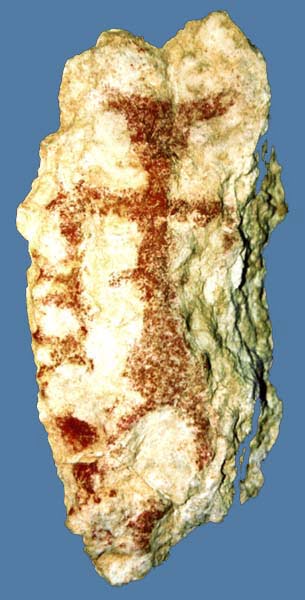
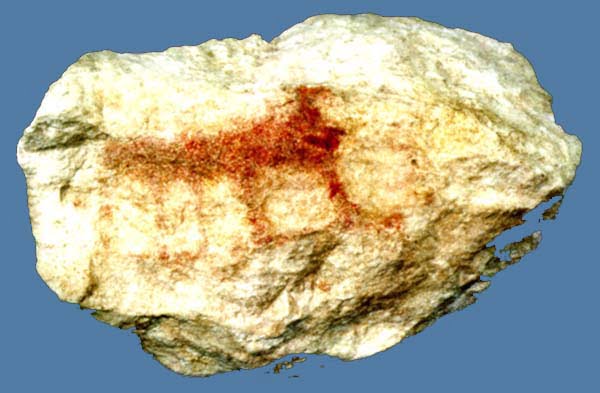
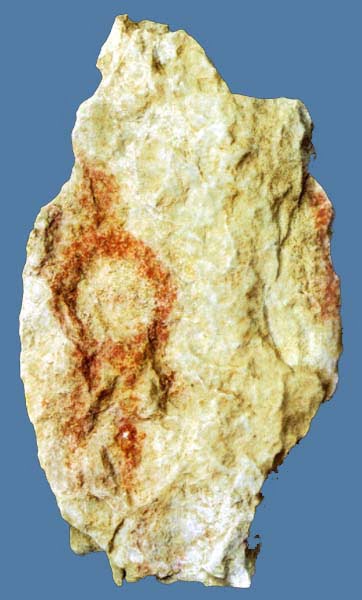
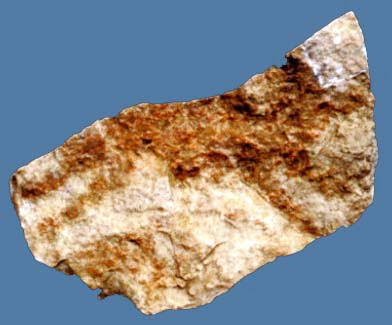
Historical notes
The cave, already covered in landslide debris in ancient times, was rediscovered in 1962 by the archaeologist Giovanni Solinas, to whom we still owe the name of Riparo Solinas today, but the first exploration took place only in 1964 by a team of scholars of the Museum of Natural History of Verona, assisted by Angelo Pasa and Franco Mezzena, works prematurely interrupted due to the sudden death of Prof. Pasa. After this first research, a long period of abandonment followed with the repeated clandestine looting of the surface deposits; only in 1982 did the first effective campaign of investigations take place entrusted to the coordination of Alberto Broglio and Marco Peresani of the University of Ferrara with the help of Mauro Cremaschi of the University of Milan, excavations that are still in progress, carried out for two or three months each year.
CARD
LATEST PUBLISHED TEXTS
VISIT THE FACTSHEETS BY OBJECT

